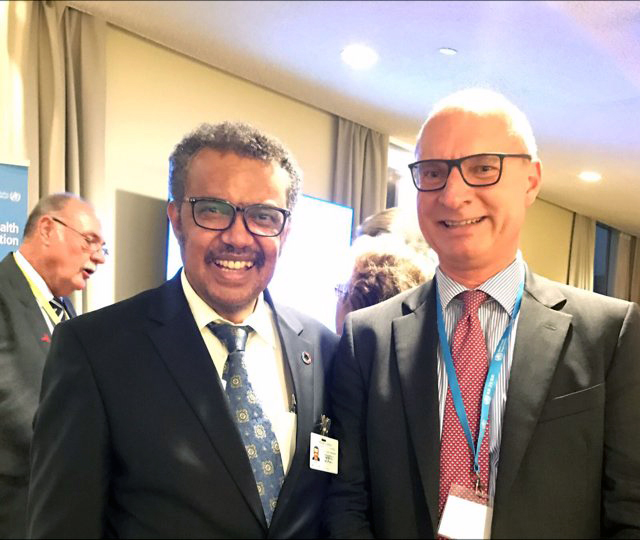By José Luis Castro
It’s a global crisis that poses a risk to nearly every family. And while this crisis is a household problem, it does not have a household name.
In 2016, nearly 15 million lives were prematurely lost to non-communicable diseases (NCDs). In 2017, we are on course to lose another 15 million to cancer, diabetes, heart and lung diseases, as well as their co-morbidities, exacerbated by rapid urbanization. This is the toll of the global crisis of NCDs.
In 2011 a set of global targets were put into place at the United Nations General Assembly High-Level Meeting on NCDs to reduce the impact of this ongoing crisis. The international community agreed to work towards a 25 percent reduction in premature mortality by 2025, and a 30 percent reduction by 2030 under the UN Sustainable Development Goals. These Global Goals were a significant first step in building the consensus that we can and must do something to address NCDs.

I met with Dr. Tedros Adhanom Ghebreyesus, Director-General of the World Health Organization at the United Nations General Assembly.
Six years later, the progress that the international community has made leaves us far from achieving our goals. As leaders gathered in New York for the United Nations General Assembly this week, The World Health Organization (WHO) launched the 2017 WHO NCD Progress Report which found that more than half of the world’s countries have not yet set NCD targets. At our current rate of progress, the targets that were set in 2011 will not be achieved, meaning the unnecessary loss of millions of lives.
Despite slow progress, there is good news. We can address this dire crisis. We know what works. The WHO has strongly promoted the idea that most premature NCD deaths can be prevented or delayed by implementing a set of effective, attainable, inexpensive ‘best-buys.’ These interventions have demonstrated to yield high returns on investments in both the prevention and treatment fields particularly in Low- and middle-income where these interventions are needed most.
This requires innovative funding mechanisms, as has been seen with tobacco and other health-harming products. Thailand, the Philipines and Malau have all linked NCD financing to tobacco and alcohol taxes. But according to the 2017 report, only 16 percent of countries have fully implemented such taxes, which are a win-win solution in reducing consumption and generating revenue tobacco taxes. With less than 2 percent of development assistance allocated to NCDs and barely half of the world’s countries budgets in place to prevent them, we must think productively about national and global investments and increased revenues that will save lives by reducing NCDs.
Similarly, restrictions on marketing of unhealthy food and drink products to children are in place in just under one-third of Member States. And strengthening health systems to provide at least basic NCD services such as drug therapy and counselling to prevent heart attacks and strokes, another of the proven interventions to reduce NCDs, have only been implemented by 27 percent of countries to date.
In order to put these best-buys into practice, we first need greater awareness about what NCDs are and how governments can implement these proven strategies to combat them. As laudable and important as global goals and meetings have been, it is now time to help governments and other stakeholders take the agreements that have been made and turn them into real world action.
Through these efforts, we can transform the conversation about NCDs. We can take it outside of UN meeting rooms, and make it a real issue discussed at dinner tables, in supermarkets, and on the streets. We can work towards a world where every person is aware of what is at stake, and can take actions that will protect them from the harms of NCDs.